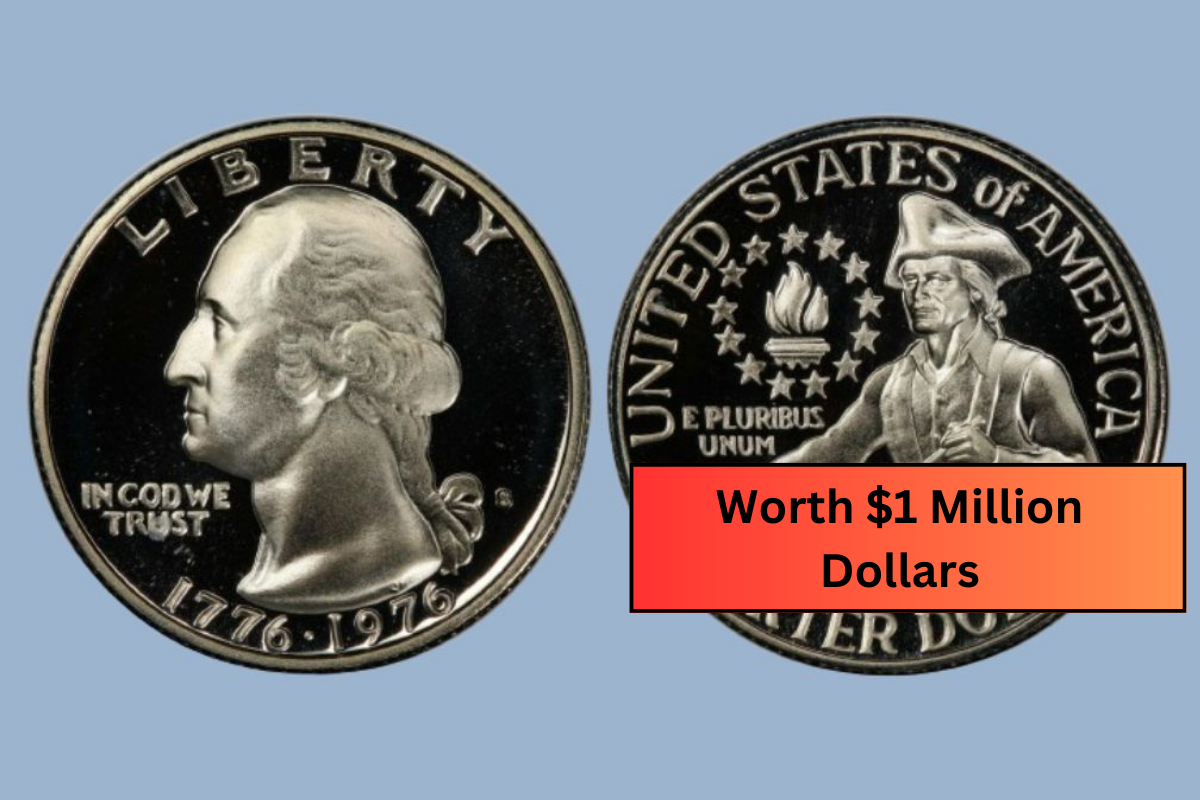Introduction
Have you ever checked your pocket change and thought, “What if this little coin is worth a fortune?” Well, if you have a unique red-toned Bicentennial quarter, you might just be in luck! Imagine finding a coin that could fetch nearly a million dollars! This article dives deep into the fascinating world of coins, specifically focusing on the unique red-toned Bicentennial quarter and why it might be the golden ticket in your pocket change.
Understanding the Bicentennial Quarter
The Bicentennial quarter, minted in 1975 and 1976, was made to commemorate the 200th anniversary of the United States. It features a unique design that stands out from the traditional state quarters you’ll find today. Most of these coins are standard, but a small number come with a distinct red tone that makes them highly sought after by collectors.
What Makes the Red Toned Version Special?
So, what’s the deal with the red-toned Bicentennial quarter? It’s all about rarity and demand. Most quarters don’t have this unique appearance, which is a result of a specific minting process that went awry, creating coins with unusual coloring. Think of it as the “rare Pokémon” of coins—everyone wants it, but only a few have it!
How to Identify Yours
You might be wondering, “How do I know if my quarter is special?” It’s simple! Look for vibrant red tones on the coin’s surface. If you find one, scrutinize it for the “1976” marking—it should be prominently displayed as proof of its Bicentennial history. Don’t stop there; check for signs of wear, as coins in better condition fetch higher prices!
Value Estimation: How Much is it Worth?
Now, let’s talk dollars and cents. The unique red-toned Bicentennial quarter can range in value depending on its condition and rarity. Prices can soar from hundreds to nearly a million dollars! It’s like finding a diamond in the rough, but you need to know how to clean up and present it. If you’re lucky enough to possess one, getting an expert appraisal is a smart move.
Market Demand and Collector Interest
The market for coins can be as fickle as fashion trends, but collectors are always on the hunt for something unique. With an increasing interest in rare coins, red-toned Bicentennial quarters are hot property. Social media, coin shows, and online auction sites regularly have enthusiasts ready to pay top dollar for these eye-catching coins. If you’ve got one, you might find yourself in a bidding war!
Steps to Take If You Think You Have One
If you’ve spotted what looks like a unique red-toned Bicentennial quarter in your change, don’t just shove it back in your pocket! Here are the steps you should take:
1. Inspect the Coin
Carefully examine the quarter under good lighting. Look for the distinguishing red hue and the year “1976.”
2. Get an Appraisal
Before you sell, consult a coin expert or experienced appraiser to get an accurate valuation. They can provide insights that you may not consider.
3. Consider Selling Options
Once evaluated, decide whether to sell through a dealer, auction, or private sale. Each method has its pros and cons, so choose what feels right for you.
Conclusion
Finding a unique red-toned Bicentennial quarter can be thrilling, especially when you realize its potential value. Whether you stumble upon one in your pocket or at a flea market, this coin serves as a reminder that hidden treasures are often right under our noses. So, next time you’re rummaging for change, keep your eyes peeled—you just might be a million-dollar millionaire in the making!
FAQs
1. How can I tell if my Bicentennial quarter is red-toned?
Look for vibrant red or reddish-orange hues. If it appears significantly different from regular quarters, it might be red-toned.
2. What is the best way to appraise my coin?
Consult a trusted coin dealer or professional appraiser for an accurate assessment of its value.
3. Are there other rare quarters I should look for?
Absolutely! There are various quarters with unique errors or limited mintages, so it’s worth doing some research.
4. Can I sell my coin online?
Yes, you can sell your coin through online auction platforms or coin trading sites, but ensure you understand the selling fees involved.
5. How does coin grading affect its value?
Coin grading, which assesses a coin’s condition, significantly affects its market value. Higher graded coins typically fetch higher prices.
